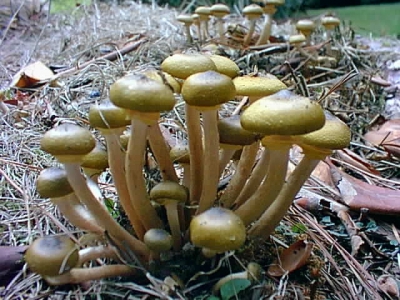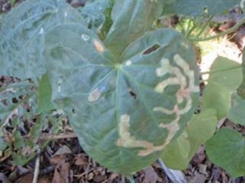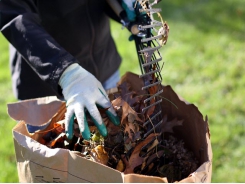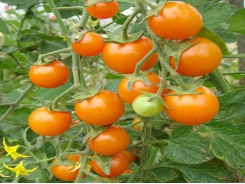How to Treat Common Plant Diseases

Coral spot (Nectria cinnabarina)
More usually associated with dead wood, this distinctive disease can cause die-back on currants, gooseberries, apples and many other woody plants.
Typical symptoms: Bright pink pustules appear on dead twigs and branches; branches also die back.
Prevention and treatment: Clear up dead twigs and branches. Prune out infected wood, cutting back at least 15cm (6in) into healthy wood. Disinfect secateurs after use.
Downy mildews (Perenospora spp., Bremia spp.)
Downy mildews are not of great importance in a garden except, at times, on lettuces and onions. Some species of downy mildew are quite specific in the plants they affect. Crucifer downy mildew affects brassicas, watercress and wallflowers; onion downy mildew affects onions and shallots; spinach downy mildew affects spinach, spinach beet and beetroot; lettuce downy mildew affects lettuce. Other downy mildews are rarely a problem.
Typical symptoms: Yellow patches on leaves, with corresponding patches of purplish mould underneath. When the mould is wiped off, the leaf underneath is yellow. (This distinguishes downy mildews from powdery mildews, to which they are not related.) Seedlings may die, plants grow poorly; onions may rot in store. Downy mildews are most common in cool damp weather.
Prevention and treatment: Grow resistant varieties if available. Use as long a crop rotation as possible. Encourage good ventilation between and within plants and clear up infected plants and debris to remove sources of infection.
Grey mould (Botrytis cinerea)
An ubiquitous and important disease causing many different symptoms on a wide range of plants including blackcurrants, strawberries, blackberries, gooseberries, lettuce and many ornamentals. Grey mould thrives in cool, damp and crowded conditions.
Typical symptoms: All symptoms are usually associated with a distinctive fluffy grey mould.
Flowers, buds and soft fruits rot; a cloud of spores may rise when disturbed. Lettuces develop a reddish-brown stem rot resulting in the tops of the plants being detached from the roots. Gooseberry, and sometimes raspberry and blackcurrant, branches may die back with no other symptoms.
Prevention and treatment: As grey mould is generally very common on dead and dying plant material, good hygiene is essential. Ventilation in greenhouses and thinning and pruning of plants to allow for good air flow also play an important role. Grey mould is a weak pathogen and usually infects through a wound already made by something else, therefore try to avoid damaging plants that could allow entry in the first place. Cutout and burn branches showing die-back; if symptoms persist, remove and dispose of the whole plant.
Honey fungus (Armillaria mellea)
This is an extremely serious disease of all woody and some herbaceous plants. Some plants are less susceptible to honey fungus, and these include ash, beech, box, elaeagnus, hawthorn, holly, larch and laurel, as well as ivy and clematis.
Typical symptoms: affected plants die suddenly. The bark near the base of the stem pulls away easily, revealing a white fungal sheet smelling of mushrooms.
Prevention and treatment: Do not leave stumps of old trees and shrubs in the ground where honey fungus is known to be a problem. Remove and burn infected plants, including as much of their root system and associated soil as possible. Replace with plants that are less susceptible to the disease.
Powdery mildews (Erysiphe spp., Sphaerotheca spp., Podosphaera spp.)
Powdery mildews cause some of the most common and serious diseases of fruit, vegetables and ornamentals. Some species of mildew are quite specific in the plants they attack, for example: crucifer powdery mildew attacks brassicas, especially swedes and turnips; cucurbit powdery mildews attacks courgettes, cucumbers, marrows and pumpkins; pea powdery mildew attacks peas and lupins; American gooseberry mildew attacks gooseberries and blackcurrants; apple powdery mildew attacks apples, pears and quince; rose powdery mildew attacks roses; strawberry powdery mildew attacks strawberries; and vine powdery mildew attacks vines. As well as this, there are many indistinguishable powdery mildews that affect asters, clematis, aquilegia, honeysuckle, hawthorn, and other ornamental plants. Powdery mildews are most common in warm dry weather and on dry soils.
Typical symptoms: A powdery white coating on almost any part of the plant. Individual powdery patches may spread and coalesce. Blossom may wither and fail and leaves drop prematurely. Infected parts may be distorted and die back, while the whole plant is weakened. Gooseberry fruit develops a brown-coloured, felt-like coating.
Prevention and treatment: Grow resistant cultivars if they are available, for instance, roses, strawberries, gooseberries, currants and asters. Do not grow susceptible plants up against a house wall or in any situation where the soil is likely to dry out. Sow turnips and swedes late and peas early to avoid any periods of dry weather, and improve soil structure and use mulches to help ensure the plants have a regular supply of water. Do not apply nitrogen fertilizer too liberally. Pick off and prune out infected leaves and shoots as appropriate, and remove and destroy all infected plant debris. Use a sulphur spray, except on plants that are “sulphur shy”, such as several varieties of gooseberry and apple.
Sclerotinia (Sclerotinia sclerotiorum)
This is a widespread disease infecting many types of vegetables and ornamentals, including carrots, parsnips, bulbs, corms and tubers in store. It is worst in cool, damp conditions.
Typical symptoms: Plants suddenly wilt and fall over. Stems of susceptible plants and bulbs, tubers, corms and roots in store develop a brown rot, often associated with a distinctive snowy-white, cottony mould.
Prevention and treatment: Good hygiene and ventilation can help to reduce the risk of this disease. Where it develops, carefully remove and destroy (do not compost) infected plants. Do not grow susceptible plants on infected land for three years.
Violet root rot (Helicobasidium brebissonii)
A distinctive disease, violet root rot affects root crops, asparagus and celery. It can also infect many ornamental plants and weed species. It is most commonly found on plants growing on wet, acid soils.
Typical symptoms: Plants grow poorly; a purple felty coating develops on roots, tubers, bulbs and corms.
Prevention and treatment: Correct p1-1 and drainage before planting if necessary. If the disease appears, remove and destroy (do not compost) infected plant material. Do not grow susceptible plants on the same land for at least three years. Vegetables that are not susceptible to this disease include peas, Brussels sprouts, cabbages, cauliflowers and sweet corn.
Wilts (Verticillium, Fusarium spp.)
A common and widespread group of diseases, wilts cause similar symptoms on fruit, vegetables (especially legumes, tomatoes and cucurbits) and ornamentals.
Typical symptoms: Wilting, often starting at the lower leaves, with some recovery at night to begin with. A dark discoloration can be seen in the stem if cut through above ground level.
Prevention and treatment: Where appropriate, earth up plants showing early symptoms of the diseases. Remove all infected plants and associated soil but do not compost. Do not grow susceptible plants on infected land for at least six years.
Có thể bạn quan tâm
Phần mềm

Phối trộn thức ăn chăn nuôi

Pha dung dịch thủy canh

Định mức cho tôm ăn

Phối trộn phân bón NPK

Xác định tỷ lệ tôm sống

Chuyển đổi đơn vị phân bón

Xác định công suất sục khí

Chuyển đổi đơn vị tôm

Tính diện tích nhà kính

Tính thể tích ao hồ




 Expert Advice for Green House Gardening – Making…
Expert Advice for Green House Gardening – Making…  Choosing a tomato variety
Choosing a tomato variety